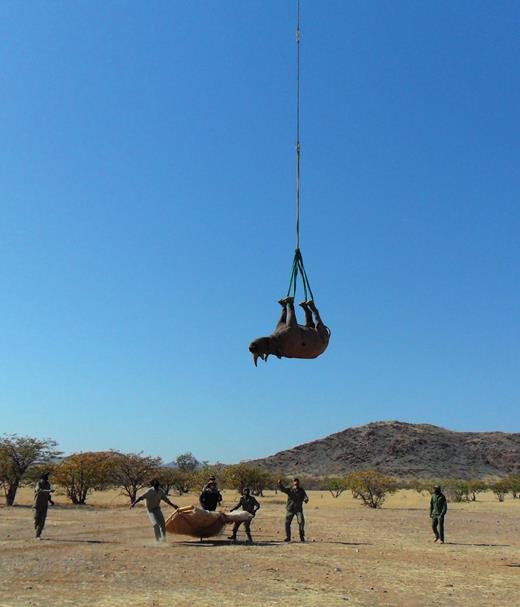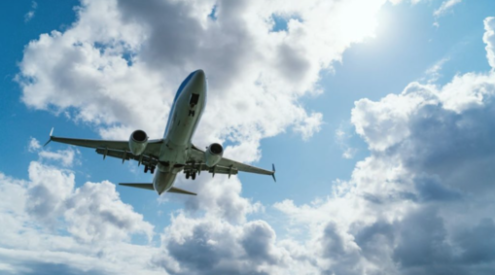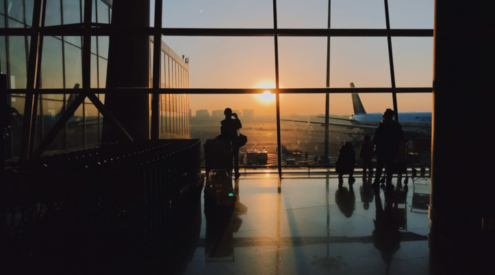An experiment exploring airlifting rhinos upside-down turned out to be the best way to transport rhinos, and was awarded an ‘Ig Nobel’ Prize by the Annals of Improbable Research, a US publication.
Contrary to the popular use of the abbreviation ‘IG’, the Ig Nobel Prize has nothing to do with Instagram, but a Nobel Prize awarded to 10 unusual or trivial achievements in scientific research. The award’s name is a pun on the ‘Nobel Prize,’ which it parodies by calling it an ignoble (not noble) award.

The rhino study took this year’s prize for transportation research with the bright idea of hanging 12 rhinos upside for 10 minutes. Wildlife veterinarian, Robin Radcliffe and his colleagues decided to investigate if slinging a rhino by its legs beneath a helicopter compromises the animal’s health.
Due to the unfortunate reality of poaching being a serious threat to rhino populations, governments and organisations actively manage populations across Southern Africa, where capture and subsequent relocation form a crucial part of rhino management.
The rugged terrain where rhino’s life may translocate by truck impractical and since 2010, the Namibian Ministry of Environment, Forestry and Tourism adopted the practice of airlifting immobilised black rhinoceroses by suspending them by their feet under helicopters for periods of up to 30 minutes.
The physiological effects of this translocation hadn’t been explored until a recent study by Radcliffe and his team in the Journal of Wildlife Diseases. Radcliffe told the BBC that Namibia was the first country to take a step back and say ‘hey, let’s study this and figure out, is this a safe thing to do for rhinos?’
The study was then initiated with the Namibian Ministry of Environment where 12 tranquilised black rhinoceroses were suspended by their feet from a crane and measured their physical responses.

As it turned out, the rhinos coped better when slung by their feet than when lying chest down or on their side. Radcliffe thinks that this is due to the positional effects of blood flow.
‘in other words, the lower parts of the lung are getting lots of blood flow for gas exchange, but the upper part of the lung is getting perfused as well, so when a rhino is hanging upside down, it’s basically like it’s standing upside up, the lung is equally perfused,’ Radcliffe told the BBC.
The research also discovered that when rhinos are on their side too long, or sternum, they get muscle damage because they are so heavy.
Prizes for the Ig Nobels were handed out by Nobel Laureates and the winners got a trophy to assemble themselves from a pdf printout in the form of a counterfeit 10 trillion dollar Zimbabwean banknote. When asked what he would do with his ‘cash’ payout, Radcliffe commented that ‘We are always looking for funding.’
Research team member and wildlife doctor Pete Morkel added that ‘This has really changed rhino translocation, and even more so elephant translocation. Picking up these big animals by their feet – it’s now accepted. The next thing we’ve got to do is some research on other species like buffalo, hippo, and maybe even giraffe’.
The full list of winners for the Ig Nobel award winners
Biology Prize: Susanne Schötz, for analysing variations in purring, chirping, chattering, trilling, tweedling, murmuring, meowing, moaning, squeaking, hissing, yowling, howling, growling, and other modes of cat-human communication.
Ecology Prize: Leila Satari and colleagues, for using genetic analysis to identify the different species of bacteria that reside in wads of discarded chewing gum stuck on pavements in various countries.
Chemistry Prize: Jörg Wicker and colleagues, for chemically analysing the air inside movie theatres, to test whether the odours produced by an audience reliably indicate the levels of violence, sex, antisocial behaviour, drug use, and bad language in the movie the audience is watching.
Economics Prize: Pavlo Blavatskyy, for discovering that the obesity of a country’s politicians may be a good indicator of that country’s corruption.
Medicine Prize: Olcay Cem Bulut and colleagues, for demonstrating that sexual orgasms can be as effective as decongestant medicines at improving nasal breathing.
Peace Prize: Ethan Beseris and colleagues, for testing the hypothesis that humans evolved beards to protect themselves from punches to the face.
Physics Prize: Alessandro Corbetta and colleagues, for conducting experiments to learn why pedestrians do not constantly collide with other pedestrians.
Kinetics Prize: Hisashi Murakami and colleagues, for conducting experiments to learn why pedestrians do sometimes collide with other pedestrians.
Entomology Prize: John Mulrennan Jr and colleagues, for their research study “A New Method of Cockroach Control on Submarines”.
Transportation Prize: Robin Radcliffe and colleagues, for determining by experiment whether it is safer to transport an airborne rhinoceros upside down.
Pictures: Journal of Wildlife Diseases
ALSO READ


















